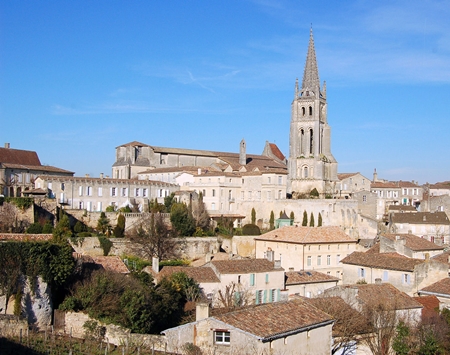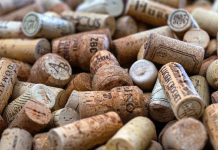In Great Britain, they used to call any red wine from the Bordeaux region “claret”, regardless of its origin or pedigree. Some British people still use the word, although they tend to be over a certain age and of a refined social class, actual or imagined. The British have used this word for the last three hundred years and although it has French origins, it is virtually unknown there. Incidentally, it’s always pronounced as “clar-ette” and not, as some nitwit once tried to tell me, as “clah-ray”. Eventually of course, the word will join the rich mausoleum of defunct but delightful English words along with hobgoblin, postilion and whirligig.
And wireless. My father always used to speak of “listening to the wireless” and he avoided the word “radio” as though it had some kind of vulgar connotation. The next generation will assume that anyone who talks about “the wireless” will probably be faintly dotty, if not actually barking mad. My grandmother once acquired a small transistor radio when they first appeared in the 1950s. She used it for listening to bible readings and other uplifting programmes. She affectionately referred to it as her “tranny” – a word that has dramatically changed its meaning in recent years and no longer refers to radios, small or otherwise. Or so I’m told.
 St. Emilion, Bordeaux (Photo: Fabien)
St. Emilion, Bordeaux (Photo: Fabien)
Both the wines this week are what the Brits used to call claret: rich and robust reds from Saint-Emilion, the oldest wine area in Bordeaux. Saint-Emilion lies on the right bank of the Dordogne River. In this part of Bordeaux, Merlot is the Number One grape; Cabernet Sauvignon nearly always takes a back seat. Oh, and in case you’re confused about right and left banks, the right bank is on the right only when you are going down stream towards the sea. If you were swimming in the opposite direction against the current, the right bank would of course be on the left, but you’d probably be too exhausted to notice.
Ch. La Marzelle, Bordeaux 2010 (red), France (Bt. 549 @ Wine Connection)
This ruby-red wine has gorgeous, elegant aromas of Morello cherries, blackcurrant and vanilla. You might pick up a dash of olives and spice, along with background aromas of brambly woodland and earthy moss. Of course, all this is typical Merlot and with 80 percent in the blend, it’s hardly surprising. The wine has a very soft mouth-feel and a satisfying taste of black fruit and cherries. You might notice a dash of lively acidity on the palate and you’ll certainly notice the solid framework of tannins that give this wine its firm structure. Despite the rich aroma, the wine is well-balanced and the fruity taste is pleasantly reserved. This is typical of many Bordeaux wines and I find it an attractive characteristic. In any case, I really don’t want a sack of cherries in every mouthful.
It’s a very dry medium-bodied wine and you might even detect touches of spice on the taste. There’s a long, peppery finish too, making it an excellent food wine. Red meat dishes would work well. Incidentally, both these wines need plenty of air contact, so be sure to pour them into a decanter an hour or so before you need them.
Ch. Villotte, Bordeaux Supérieur 2010 (red), France (Bt. 650 @ Wine Connection)
The Bordeaux Supérieur appellation has been around since 1943 but in May 2008 the regulations were tightened up with the intention of raising the general standard. The imposing fourteenth century Château Villotte is in the commune of Rauzan. It’s a vaguely impressive building of light brown stone, with a wide monumental staircase that leads down to the garden. Like Ch. La Marzelle, this wine is a text-book blend, with 80% Merlot and 20% Cabernet Sauvignon. It’s somewhat lighter in body than the La Marzelle but in terms of character, rather more serious.
Dark and ruby-red, the wine has a typically rich and complex aroma of black fruit, black cherries, mint, vanilla and spice. Woodland aromas waft out of the glass too and I thought I could pick up faint background reminders of olives and strawberries.
It has a soft but elegant mouth-feel and you might notice a small but unmistakable tang of light acidy. The wine is light-to-medium bodied, plenty of red fruit and cherries on the taste and a solid foundation of ripe tannins. It has a long, dry finish with hints of vanilla and at 13% alcohol this would make an excellent food wine.
Incidentally, the Concours des Grands Vins de France is one of France’s longest-established wine competitions held in Burgundy each year. I mention this because in 2011, this wine won a Gold Medal at the competition and there’s a little sticker on the bottle to prove it.




